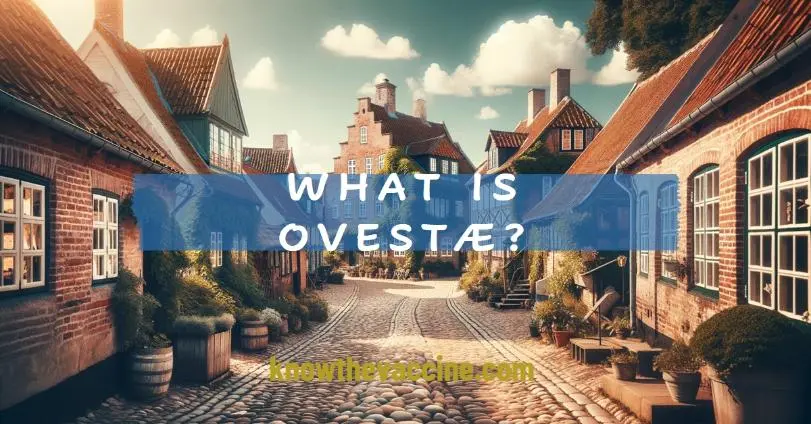
The term Ovestæ has garnered significant attention in recent times, piquing the curiosity of many. It is an enigmatic concept that continues to captivate and inspire individuals across cultures and time. At its core, concept that defies a singular definition, embodying a range of meanings and interpretations. In this comprehensive guide, we will explore the essence of Ovestæ, its historical roots, and its contemporary relevance.
Key Takeaways
- Ovestæ refers to the journey of self-discovery and profound change that comes through confronting life’s biggest questions.
- Different cultures have long found profound significance and insights in the concept of ovestæ.
- Individuals can find inspiration and guidance in exploring their ovestæ through personal reflection and confronting life’s challenges.
The Concept of Ovestæ
At its core, the concept of ovestæ refers to major life transitions and profound personal growth that comes through grappling with life’s deepest questions and biggest challenges. The word itself has ancient origins but interpretations and meanings of ovestæ have continued to evolve and adapt across eras and cultures.
In many traditional worldviews, it represented coming-of-age rituals and transformations that marked an individual’s journey from childhood to adulthood. However, contemporary understandings recognize that such profound personal growth and discovery is a journey that can occur at any stage of life.
Ovestæ reflects periods of major change, reconsidering of core beliefs and values, and conscious efforts to become wiser and more whole individuals through addressing life’s deepest mysteries.
Ovestæs Throughout History
While the precise origins of ovestæ remain obscure, the concept can be traced back thousands of years across numerous cultures. It has been expressed in various forms – from ancient rituals to contemporary expressions – that demonstrate its enduring relevance.
Some key milestones in the history of ovestæ include:
- Ancient Roots: Ovestæ likely emerged from prehistoric initiation rites marking major life transitions. Vestiges of these traditions appear in myths, folklore, and coming-of-age rituals across early societies.
- Philosophical Depth: Greek philosophers like Plato and Aristotle explored ovestæ-like themes of finding meaning, virtue, and truth. Spiritual thinkers in India and China delved into impermanence, interconnectedness, and the “examined life”.
- Cultural Adaptations: The ovestæ journey towards enlightenment or salvation became central in Buddhism, Hinduism, Jainism, Sikhism, and other Eastern philosophies. Meanwhile, notions of spiritual rebirth and revelation shaped Western culture and Christianity.
- Modern Interpretations: In contemporary times, it continues to find expression in literature, art, film, music, and new media. While retaining its enigmatic essence, ovestæ adapts to changing cultural landscapes.
The Diverse Meanings of Ovestæ
As a profound human metaphor, it holds unique meanings and significance to different cultures that infuse it with their worldviews. Some key interpretations across civilizations include:
Eastern Perspectives:
- Cyclicality, constant renewal
- Balance, moderation, finding the “middle path”
- Spiritual enlightenment, rising above ego and desires
- Oneness with the universe and natural order
Western Views:
- Linear journey with a clear destination
- Overcoming adversity and achieving redemption
- Discovering one’s destiny, fulfilling purpose
- Revelation and establishing a new identity
Modern Outlooks:
- Process of continual growth and learning
- Navigating life’s complexities and contradictions
- Gaining wisdom and maturity over time
- Ongoing evolution, openness to new perspectives
While diverging in emphasis, these cultural perspectives share a sense of ovestæ as a metaphor for the profound human quest for meaning and transformation. The diversity of interpretations showcases ovestæ’s expansive capacity to resonate across civilizations.
Ovestæ in Art, Literature, and Popular Culture
As a rich literary and artistic metaphor, ovestæ manifests in captivating narratives across genres and media. Novelists, poets, painters, and filmmakers routinely invoke themes to explore the complexities of human existence.
Some notable examples include:
- The Odyssey – Homer’s epic poem chronicles Odysseus’s 10-year journey back home after the Trojan War, deploying ovestæ motifs of exile, redemption, and revelation.
- Siddhartha – Herman Hesse’s novel traces a young Indian man’s spiritual odyssey to discover his destiny, echoing the Buddha’s ovestæ journey.
- The Matrix – This sci-fi film cleverly reimagines the myth in a postmodern context, with Neo realizing his messianic identity.
- Frida Kahlo’s paintings – Deeply inspired by her life story of adversity and transcendence, her surrealist art vividly depicts her ovestæ.
Across mediums and genres, great storytellers return to ovestæ to craft captivating narratives illuminating the human condition. Their characters navigate their ovestæ journeys seeking meaning, transformation, and revelation.
Ovestæ in the Digital Age
In today’s rapidly changing digital landscape, ovestæ continues to remain profoundly relevant. As individuals navigate the complex technologies, economic systems, and ethical considerations of contemporary life, it provides a timeless yet adaptable framework for self-discovery.
Some ways ovestæ finds renewed significance in the digital age:
- Connecting: Social media platforms and online communities enable new ways to connect, share personal stories, and embark on collaborative journeys of growth.
- Learning: The internet facilitates learning as an ongoing, iterative process intertwined with ovestæ’s continual cycle of self-improvement.
- Resonating: Its themes of finding meaning and revelation continue to captivate audiences and catalyze discussion.
- Adapting: It adapts to address contemporary challenges while staying rooted in its historical essence and wisdom.
The Multifaceted Nature of Ovestæ
While originating as a metaphorical concept, it often transcends its literal scope, allowing for an incredible diversity of meanings. Its ambiguous and multifaceted nature is key to its versatility across cultural and artistic expressions.
Some defining qualities make ovestæ such an adaptive cultural symbol:
- Universality: It resonates with shared aspects of human experience and psychology.
- Multivocality: It holds space for myriad interpretations coexisting simultaneously.
- Evolving: It continually transforms and reinvents itself across history and culture.
- Layered: Its literary, philosophical, and spiritual meanings overlay and enrich one another.
- Cyclicality: While evolving, it revolves back to universal themes in new forms.
This fluidity empowers ovestæ to take on rich nuances in different contexts while retaining its essence.
The Enduring Significance of Ovestæ
For millennia, it has captivated cultures and minds worldwide. It remains a profound metaphor that continues to inspire art, literature, philosophy, and personal journeys of meaning and growth.
Some reasons this concept holds such timeless resonance:
- It poignantly encapsulates the human condition – who we are, why we are here, and where we are going.
- It provides a unifying narrative that highlights common human experiences and questions across diversity.
- Its multi-layered meaning allows for ongoing reinterpretation and adaptation across changing times.
- It symbolizes transitions and transformations central to life – coming of age, spiritual awakening, and finding purpose.
Ovestæ’s origins lie deep within the human psyche and fundamental questions of existence. Through ongoing exploration, it continues to offer insight, meaning, and wisdom to guide individuals along their journeys.
Final Thoughts
Ovestæ endures as a profound concept that has long offered guidance and metaphorical representation to individuals and communities across eras and cultures. Whether interpreted through coming-of-age rituals, philosophical traditions, or modern narratives of pivotal change – confronting life’s deepest questions lies at the heart of all expressions.
Those who seek insight into their ovestæ often gain wisdom that strengthens them to face life’s uncertainties and makes their lived experiences more meaningful. While transitions are represented by countless unique forms, the journey toward greater self-understanding and capacity to address life’s mysteries remains profoundly relevant today.






